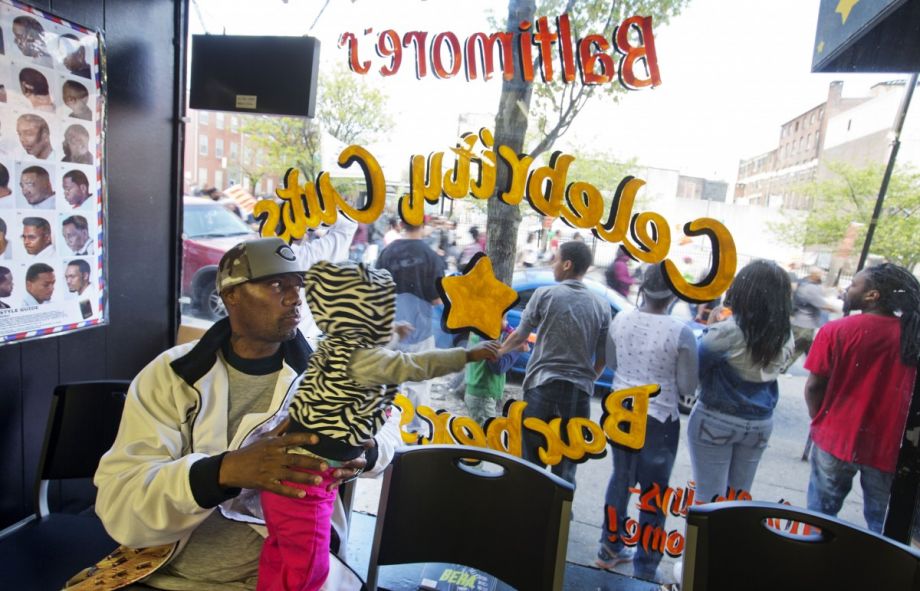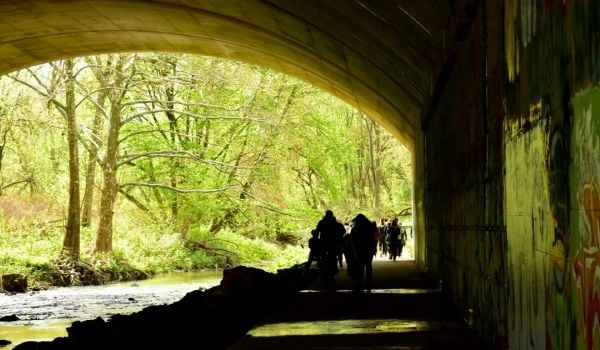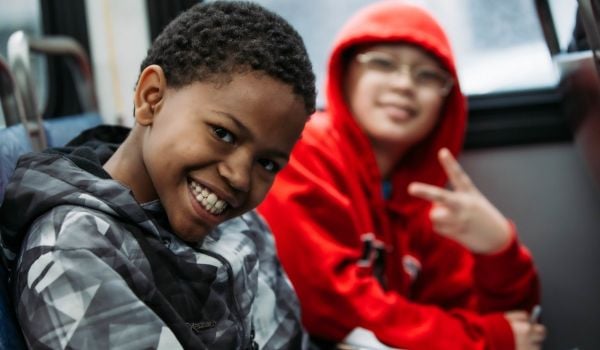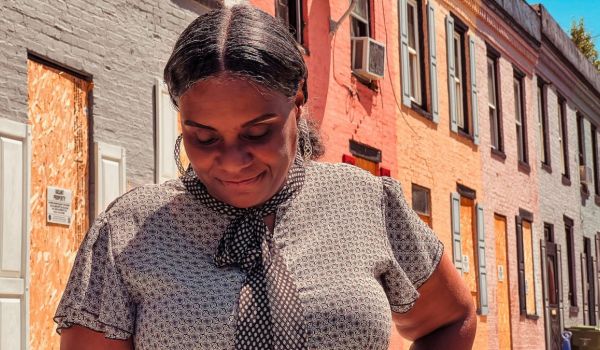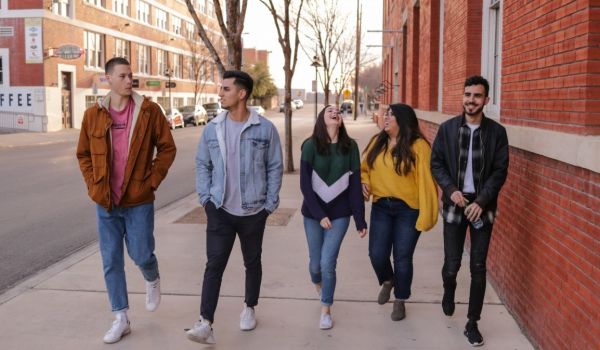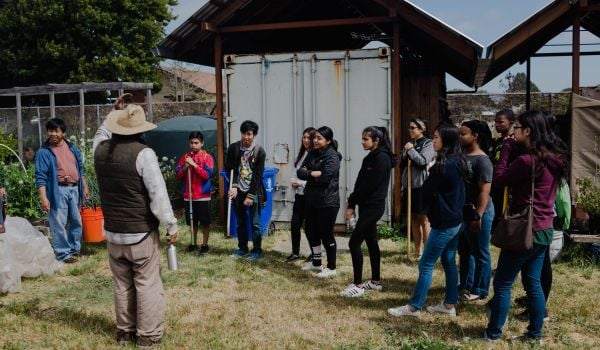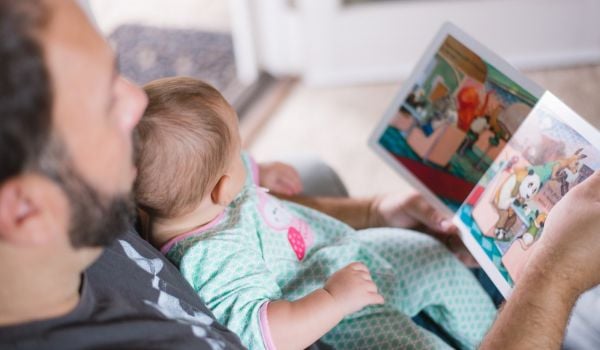By one count, there are close to 1,700 young people in Baltimore who are homeless: Under the age of 25, not in the custody of a parent or guardian, and without a regular place to sleep at night.
On a normal day, between 40 and 50 of them stop by the Youth Empowered Society Drop-In Center, according to executive director Blair Franklin. They come to the center, which is partially run by formerly homeless youth, for food or a change of clothes, Franklin says. Or bus tokens. Or a shower. Or a place to do laundry, charge a phone, or take a nap. Or get health services in the van that parks out back every week. Some come to find a therapist, or a lawyer who can help with expunging criminal records.
“First and foremost we’re like a safe space,” Franklin says. “Young people tell us what they need and want and we work toward fulfilling that.”
In addition to providing basic services to its visitors, the YES Drop-In Center tries to invest in leadership capacity-building among the homeless youth that use its services, Franklin says.
“We live in a world that does not pay attention to young people and often sees them as without agency and without choice and value,” Franklin says. “[But] we see folks kill it when they are given the space to say what should happen and then participate in that change.”
It’s organizations like the YES Drop-In Center that are among the first grantees of the Baltimore Children and Youth Fund, created by the Baltimore City Council in defiance of a veto by former Baltimore Mayor Stephanie Rawlings-Blake.
As Colorlines reported in August, the fund was pushed into existence in the wake of the protests surrounding the death of Freddie Gray, with City Council President Bernard C. “Jack” Young leading the charge. The goal of the fund was to not just support programs that help young people in Baltimore, but to upend the way grants for community-serving goals are distributed.
In its first round of awards, 84 grantees split $10.8 million in funds.
“I would argue it’s probably the most diverse portfolio of any grantmaking organization in the city,” says Dayvon Love, director of public policy for the Baltimore-based Leaders of a Beautiful Struggle, “a grassroots think-tank which advances the public policy interest of Black people.”
The group’s co-founder, Adam Jackson, was co-chair of a task force appointed in 2017 to develop the Baltimore Children and Youth Fund’s grantmaking structure, built around the values of racial equity, intergenerational leadership, community ownership, and collective decision-making.
Love says that Leaders of a Beautiful Struggle wanted to upend the typical grantmaking process. Too often, he says, highly professionalized, white-led nonprofits are positioned to get grants meant to address problems in disadvantaged black and brown communities. Community-based organizations often don’t have the connections to get access to those same resources, Love says.
“And it undermines the ability for black-led organizations in our communities to do the work,” Love says. “Really, the purpose of our role was to try to structure the youth fund in a way to flip that dynamic so that grassroots organizations could compete on an even playing field with traditional nonprofit organizations, but also do so in a way that could elevate [community-based] organizations.”
With its $230,000 grant from the Baltimore Children and Youth Fund, the YES Drop-In Center will be able to hire a dedicated youth leadership advocacy coordinator, Franklin says, and put more resources into direct assistance for homeless youth in the former of flexible housing assistance and eviction prevention, among other services.
Aside from the YES Drop-In Center, grantees include the National Great Blacks in Wax Museum, the Baltimore Child First Authority, Wide Angle Youth Media, and the United Workers SB7 Youth Corps — which plans to build on an organizing program that helped stop a trash incineration from being built, as Next City has covered.
City Council President Young, who was not available for an interview, had been pushing to create more funding for youth programs for years before the death of Freddie Gray helped galvanize support for the fund, according to the report in Colorlines.
“Part of it is that a lot of young people just don’t have things to do,” says Love. “There’s been a disinvestment over the past 20 to 25 years or so in funding related to programming for youth and, at the same time, an increase in funding for things like police and public safety and corrections.”
The task force wanted to support programs in the city that would give black and brown youth opportunities to envision futures that are rarely depicted in popular media, Love says. And it wanted to support a range of community organizations with small and large grants that would help them build organizational capacity, in addition to supporting the youth-oriented work they were proposing. That required creating an atypical grantmaking process. To sift through the $75 million in grant requests from 487 applicants, a “Grant Proposal Review Panel” was convened with community representatives and not just professional grant reviewers, Love says.
“What that does is it makes sure that it’s not just relationships driving who gets dollars,” Love says. “It’s a very honest assessment of the program that’s before them.”

Jared Brey is Next City's housing correspondent, based in Philadelphia. He is a former staff writer at Philadelphia magazine and PlanPhilly, and his work has appeared in Columbia Journalism Review, Landscape Architecture Magazine, U.S. News & World Report, Philadelphia Weekly, and other publications.
Follow Jared .(JavaScript must be enabled to view this email address)

